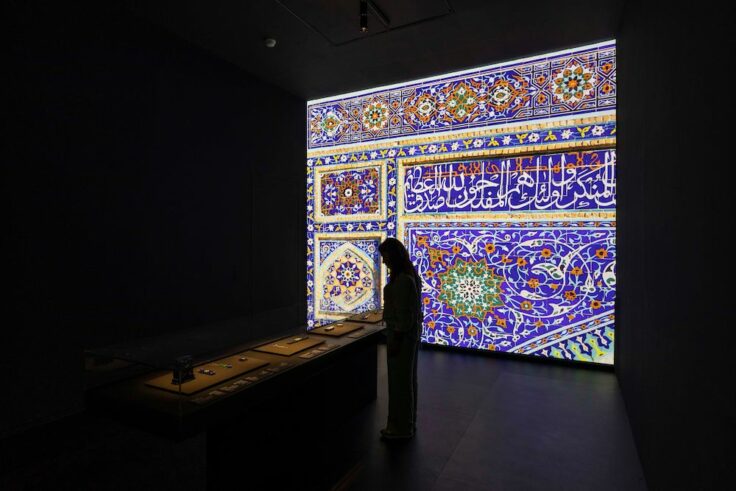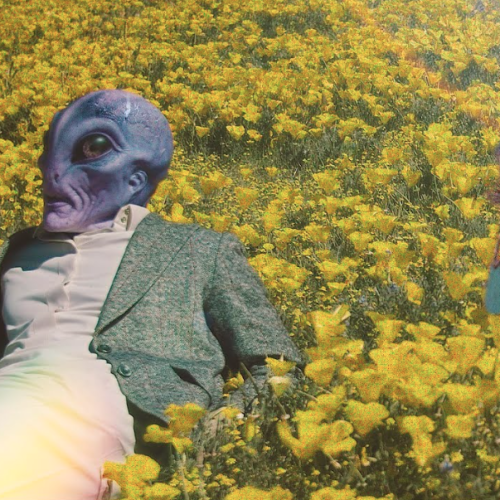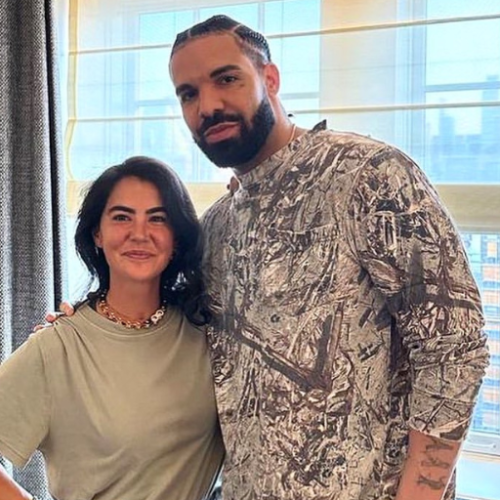Louis J. Cartier and his younger brother Jacques were incredible collectors of Islamic art. The brothers, whose grandfather Jacques Cartier founded the French family’s jewelry house in 1847, frequently traveled to India and Bahrain, collecting Persian and Indian paintings, manuscripts, and other objects, which had a profound impact on the aesthetics and motifs used by Cartier in creating its exquisite pieces from the 1920s onwards. This enduring fascination with Islamic art is the subject of “Cartier, Islamic Inspiration and Modern Design,” which made its UAE debut in November— it’s third stop— at the Louvre Abu Dhabi following successful iterations at the Dallas Museum of Art and Paris’s Musée Arts Decoratifs. The exhibition, which is underway until March 24, was fêted last week with a glamorous cocktail that brought together beloved regional faces and brand ambassadors such as Nadine Labaki, Yousra, Razanne Jammal, and Dhafer L’Abidine, who descended upon the Louvre Abu Dhabi for an unforgettable evening that included a spectacular musical performance by opera singer Fatima Alhashmi and a series of captivating dance performances.
Featuring more than 400 objects, including iconic Cartier pieces (some never before exhibited publicly) and works of Islamic art from local and international collections, “Cartier, Islamic Inspiration and Modern Design” does a beautiful job of exploring how the influence of Islamic art was meticulously weaved into intricate and vibrant jewelry designs, while offering the public an opportunity to experience the Maison’s heritage firsthand and appreciate the craftsmanship behind its iconic creations through a historical collection of jewels preserved by the brand.
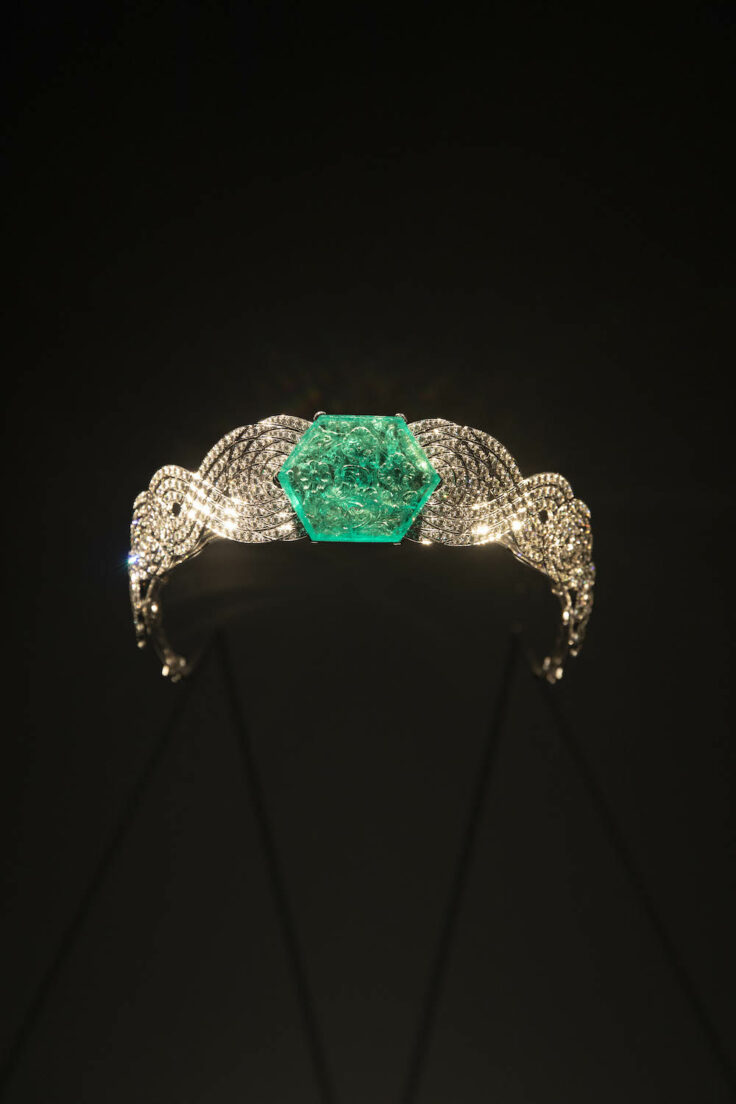
Cartier recognized the importance of documenting its creations early on. From the early years of the Maison’s founding in 1847, Cartier began cataloging its designs and creations. Detailed drawings, sketches, photographs, and design notes were meticulously archived, providing insights into the artistic vision and craftsmanship behind each piece. As the first jewelry house to establish an archive department in 1973, the Maison employs archivists and historians dedicated to cataloging, conserving, and researching the materials stored in its archives, making it easier for scholars and enthusiasts to explore the brand’s rich history.
The exhibition, a four-way collaboration between the Louvre Abu Dhabi, Musée des Arts Décoratifs, Musée du Louvre, and France Muséums (with the support of Maison Cartier), was “the result of almost five years of research in archives, drawings, and photographs to discover the links between Cartier creations and Islamic art, and to identify the sources of inspiration,” according to the exhibition curators, Judith Henon-Raynaud and Évelyne Possémé.
From dazzling tiaras and inlaid cigarette cases to historical photographs, design sketches by Charles Jacqueau— a pivotal designer at Cartier— and works of Islamic art from the Louvre’s robust collection, “Cartier, Islamic Inspiration and Modern Design” dissects how ideas move across cultures through trade, and travel, beautifully demonstrating what it means to be tangibly inspired. “The exhibition allows us to understand the importance of the discovery of Islamic art for artists at the beginning of the 20th century, and the way in which this aesthetic influence was at the origin of many masterpieces produced in Europe, and a real fashion phenomenon,” the co-curators said.
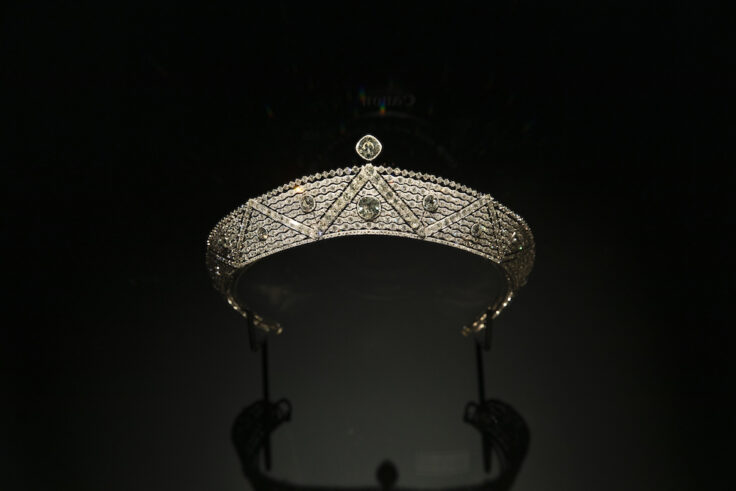
Colorful cabochons from India, Iranian turquoise, and the aesthetic forms from around the Islamic world like the famous tiles of Iznik provided an endless well for design inspirations. Many of the angular, geometric patterns found in mosques and Quranic inscriptions were incorporated into the works. The inspiration even extended to invitations and advertisements, which were a nod to the illuminated manuscripts and Persianate miniature styles— some of which are on display. Highlights of the exhibition include a pen box said to have belonged to Mirza Muhammad Munshi and a 19th century casket from Iran on loan from Paris’s Musée du Louvre, as well as a 1920s vanity case with decoration inspired by Iznik ceramics and one of the most show-stopping displays of the house’s iconic Tutti Frutti designs of the ’20s and ’30s you will ever see, courtesy of Cartier’s own collection.
The exhibition scenography and the digital space were designed by the New York-based design studio Diller Scofidio + Renfro, who was also responsible for the exhibitions in Paris and Texas. Large digital animations showing artistic interpretations of the assembly of Cartier pieces and projections of artworks and photographs highlighting Jacques Cartier’s travels through Bombay and Muscat were designed to create a fully immersive experience and allow visitors to understand the object more and gain a stronger appreciation for the role Islamic aesthetics played from the early 20th century to the present day.
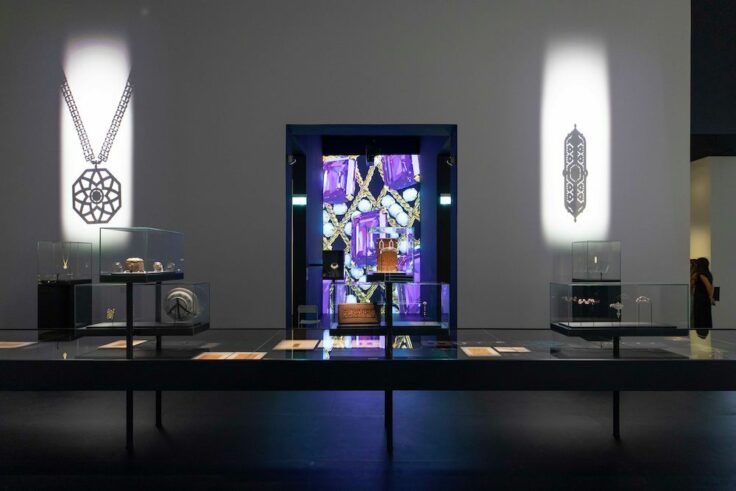
It’s not the first time that the Maison collaborates with the Louvre Abu Dhabi. In 2019, the “10,000 Years of Luxury” exhibition featured iconic pieces on loan from the Cartier Collection. The museum also presented USO, The Perfumed Cloud (USO = Unidentified Scented Object), an olfactory art installation, created by Maison Cartier’s in-house perfumer Mathilde Laurent and Transsolar Klima Engineering.
Given the current geopolitical dynamics in the Middle East, the timing of “Cartier, Islamic Inspiration and Modern Design” is particularly poignant. While it’s obvious that jewelry alone can’t alleviate political tensions, museums play an essential role in fostering connections between cultures, serving as vital catalysts for promoting intercultural understanding, empathy, and tolerance. “Cross-cultural influence has always been central to the narrative of Louvre Abu Dhabi, evident in both our permanent galleries and temporary exhibitions,” said Guilhem André, the museum’s Acting Director of Curatorial, Scientific and Collection Management Department. “The exhibition ‘Cartier, Islamic Inspiration and Modern Design’ is a prime example of this.”
For more information about the exhibition and to book tickets, please visit www.louvreabudhabi.ae.





